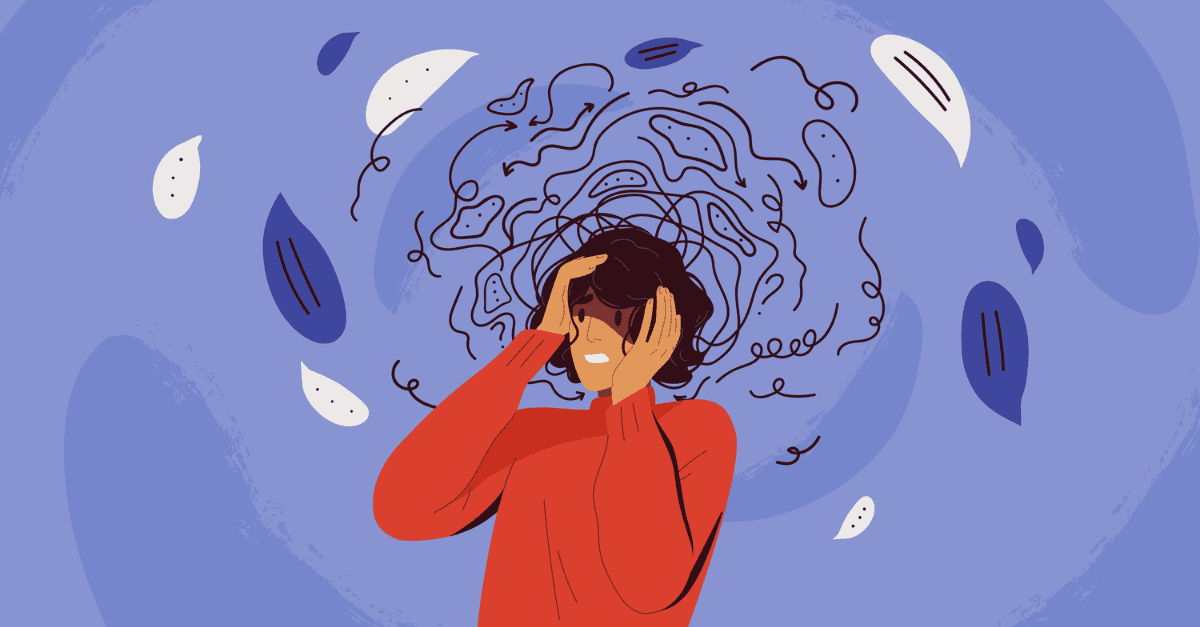
Living and Loving With Chronic Lyme Disease
Written By: Jeb Blount
Podcast: Play in new window | Embed
Subscribe: Apple Podcasts | Spotify | Amazon Music | Pandora | iHeartRadio | Email | RSS
On this episode of the Sales Gravy Podcast, we are switching things up to take on a very important topic— Chronic Lyme Disease.
Jeb Blount (Sales Gravy) and Fred Diamond, co-founder of the Institute for Excellence in Sales (IES) discuss Fred’s latest book, Love, Hope, Lyme and his personal journey supporting a loved one with Chronic Lyme Disease.
You’ll learn what Lyme Disease is, the devastating effects that Chronic Lyme Disease has on hundreds of thousands of people each year, why prevention is key, and how you can support anyone in your life who is battling a chronic illness.
Living With Someone Who Has Chronic Lyme Disease
Living with a loved one who has Chronic Lyme Disease can be emotionally and mentally challenging, as the condition can cause a wide range of symptoms that can affect the person’s physical, emotional, and mental well-being. Your loved one may experience depression, anxiety, and irritability as a result of their condition.
Fred discusses how important it is to be supportive, patience, and understanding. He explains that everyone’s experience with Chronic Lyme Disease is different, so it’s important to be flexible and open to different approaches to treatment and care.
One of the most difficult aspects of living with someone who has Chronic Lyme Disease is dealing with the person’s ongoing fatigue and pain. These symptoms can make it difficult for the person to perform daily tasks and can also affect their mood and ability to socialize.
But, as Fred says, where there is love, there is hope.
What is Lyme Disease
Lyme disease is an infectious disease caused by a bacteria called Borrelia burgdorferi. It is primarily spread through the bite of infected black-legged ticks, also known as deer ticks. The black-legged tick is found in wooded, brushy, and grassy areas, and when it bites, it can transmit the bacteria to the person.
The most common early symptoms of Lyme disease include fever, fatigue, headache, muscle and joint pain, and a bull’s-eye rash. The rash, called erythema migraines (EM), usually appears at the site of the tick bite and can expand to become a large red area.
Chronic Lyme Disease
Chronic Lyme disease, also known as post-treatment Lyme disease syndrome (PTLDS), is a condition that can occur after a person has been treated for an initial infection with the bacteria that causes Lyme disease.
People with PTLDS may continue to experience symptoms, such as fatigue, pain, and cognitive difficulties, long after the bacteria have been cleared from their body. Fred explains that this is why it is difficult and frustrating for people who are living with Chronic Lyme disease to get physicians and loved ones to believe them.
The cause of PTLDS is not fully understood, but it is thought that it may be related to ongoing inflammation or damage to tissues caused by the initial infection. Some researchers also believe that the bacteria may persist in the body, despite treatment, and continue to cause symptoms.
Lyme Disease Symptoms
The symptoms of Lyme disease can vary widely and may be different for each person. The most common symptoms include:
- Erythema migrans (EM) rash: A bull’s-eye rash that appears at the site of the tick bite, usually within 3 to 30 days after the tick bite. The rash can expand to become a large red area and may or may not be itchy or painful.
- Flu-like symptoms: fever, chills, fatigue, headache, muscle and joint aches, and swollen lymph nodes.
- Neurological symptoms: difficulty concentrating, memory problems, and headaches. Some people may also experience facial palsy, which is a temporary weakness or drooping of the facial muscles.
- Cardiovascular symptoms: irregular heartbeats, or chest pain.
- Arthritis: joint pain and swelling, especially in the knees.
- Bell’s palsy: It is a sudden weakness or paralysis of the muscles on one side of the face.
Symptoms of Lyme disease can appear in stages. Early symptoms usually appear within days to weeks after a tick bite.
However, if left untreated, the infection can become chronic Lyme disease. It can spread to other parts of the body and cause more serious symptoms such as neurological problems, heart problems, and joint inflammation.
This is why it is important to seek medical attention immediately if you suspect you have been bitten by a tick and experience symptoms of Lyme disease.
Symptoms of Chronic Lyme Disease can be similar to those of early Lyme disease, but they may also include:
- Fatigue
- Muscle and joint pain
- Cognitive difficulties (such as memory problems and difficulty concentrating)
- Sleep disturbances
- Depression
- Irritable bowel syndrome
- Headaches
It is important to note that, diagnosis of PTLDS can be difficult, as there is no specific test for the condition, and symptoms are often non-specific. Due to lack of specific diagnostic criteria, treatment for PTLDS is also not well defined, often results in misdiagnose, and can be controversial.
Treating Lyme Disease
In most cases, Lyme disease is treated with antibiotics, such as doxycycline or amoxicillin, and symptoms usually improve within a few weeks. However, if left untreated, the infection can spread to other parts of the body and cause more serious symptoms such as neurological problems, heart problems, and joint inflammation.
Treatment for Chronic Lyme Disease typically involves symptom management and may include medications to reduce pain and inflammation, and physical therapy to help manage joint pain. Some people may also benefit from cognitive behavioral therapy or counseling to help cope with the emotional and psychological effects of the condition.
How to Protect Yourself from Tick Bites
There are several steps you can take to avoid tick bites and reduce your risk of contracting Lyme disease:
- Wear protective clothing: When spending time in wooded or grassy areas, wear long sleeves and pants to cover your skin. Light-colored clothing makes it easier to spot ticks. Tuck pants in boots and shirts in pants to create barriers.
- Use tick repellent: There are many tick repellents available, including sprays, lotions, and permethrin-treated clothing.
- Check your body for ticks: After spending time in tick-infested areas, thoroughly check your body for ticks, paying close attention to the areas around your waist, armpits, and scalp.
- Keep ticks out of your yard: Keep your lawn trimmed and maintain a wood chip or gravel barrier between lawns and wooded areas.
- Avoid wooded and brushy areas with high grass, and walk in the center of trails to avoid contact with overgrown grass and bushes.
- Keep pets protected: Pets can bring ticks into your home, so be sure to keep them protected with tick repellents and by regularly checking them for ticks.
- Know the symptoms of Lyme disease and seek medical attention immediately if you suspect you have been bitten by a tick and experience symptoms such as fever, fatigue, headache, muscle and joint pain, and a bull’s-eye rash.
It is important to note that, even if you take all the precautions, you may still get a tick bite. Therefore, it is important to check your body regularly for ticks, especially after spending time in tick-infested areas.
What to Do If You’ve Been Bitten By a Tick
If you have been bitten by a tick, it’s important to take the following steps to reduce your risk of contracting Lyme disease or other tick-borne illnesses:
- Remove the tick as soon as possible: Use fine-tipped tweezers to grasp the tick as close to the skin as possible, and pull it straight out. Do not twist or crush the tick, as this can cause the tick to release more bacteria into your skin.
- Clean the bite area: After removing the tick, clean the bite area with soap and water, and apply an antiseptic to the area to prevent infection.
- Save the tick: Put the tick in a small container with a moistened cotton ball, and store it in the refrigerator or freezer. This can be helpful for identifying the tick species and for testing for tick-borne diseases.
- Watch for symptoms: Symptoms of Lyme disease typically appear within 3 to 30 days of a tick bite and include fever, fatigue, headache, muscle and joint pain, and a bull’s-eye rash. If you experience any of these symptoms, contact your healthcare provider.
- Take preventative measures: Use tick repellent and wear protective clothing to reduce your risk of tick bites.
- Notify your doctor: Inform your doctor that you have been bitten by a tick and they may monitor you for the symptoms of Lyme disease or other tick-borne illnesses. They may also advise you to take antibiotics as a prophylactic treatment to prevent the disease.
It’s important to note that not all ticks carry Lyme disease and not all tick bites result in infection. But if you have been bitten by a tick and you have symptoms of Lyme disease, it is important to seek medical attention right away because, untreated, it can become Chronic Lyme Disease.
About the author
Jeb Blount
Jeb Blount is one of the most sought-after and transformative speakers in the world…
Get FREE Sales Training Delivered to Your Inbox
Join more than 360,000 professionals who get our weekly newsletter.

Learn Online
Self-paced courses from the
world's top sales experts

Virtual Training
Live, interactive instruction in small
groups with master trainers

Coaching
One-to-one personalized coaching
focused on your unique situation





